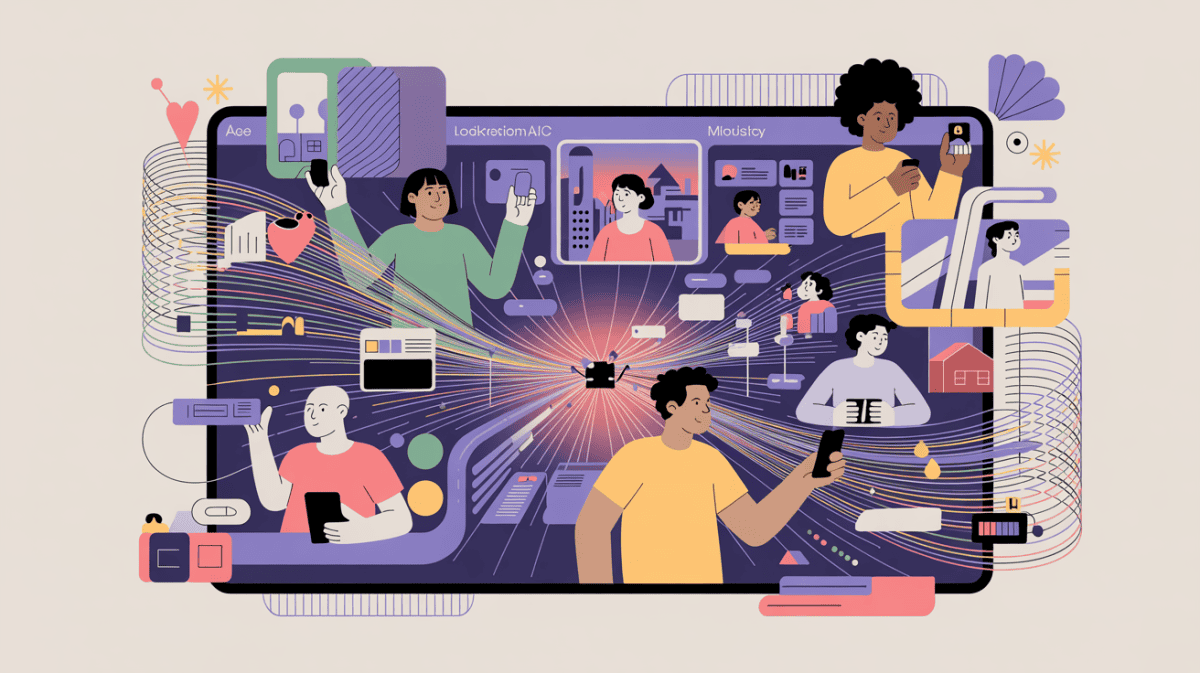In today’s digital landscape, personalization has evolved from a luxury to an expectation. As we step into 2025, AI-powered personalization is revolutionizing how businesses interact with their customers, creating tailored experiences that drive engagement, satisfaction, and loyalty.
The Rise of Hyper-Personalization
Hyper-personalization goes beyond basic customization, leveraging AI and machine learning to create interfaces uniquely tailored to each user’s needs, preferences, and behaviors. This data-driven approach analyzes various factors:
- User interactions (browsing history, click-through rates, time spent on pages)
- Demographics (age, location, gender, occupation)
- Psychographics (interests, values, lifestyle)
- Real-time context (current location, time of day, device being used)
By harnessing this wealth of information, AI algorithms can identify patterns, predict user behavior, and generate highly personalized experiences in real-time.
Key Trends in AI-Powered Personalization
1. Context-Aware Adaptability
AI now leverages real-time data to create hyper-relevant experiences. For example, fitness apps offer workout suggestions based on local weather conditions and your fitness tracker data. This level of contextual awareness ensures that users receive timely and relevant content, enhancing overall engagement.
2. Predictive Behavior Models
AI’s ability to anticipate user actions with remarkable accuracy allows for proactive personalization. Shopping platforms now offer discounts on items users are likely to buy, based on their browsing and purchase history. This predictive approach not only enhances the user experience but also drives conversions.
3. Multi-Modal Personalization
By combining inputs like text, images, and voice, AI creates more inclusive and intuitive experiences. Smart assistants can now suggest recipes based on spoken dietary preferences and pantry inventory. This multi-modal approach caters to diverse user needs and preferences, making interactions more natural and effortless.
4. Dynamic Content and Interface Adaptation
AI enables interfaces to adjust in real-time based on user actions and preferences. This could involve:
- Personalized content recommendations
- Dynamically adjusting layouts and features
- Predictive actions that anticipate user needs
- Tailored visual and auditory cues
For instance, Netflix uses AI to personalize thumbnail images and content recommendations for each user, significantly increasing engagement.
Implementing AI-Powered Personalization
To effectively implement AI-powered personalization, consider the following strategies:
- Data Collection and Analysis: Focus on gathering comprehensive user data while respecting privacy regulations. This forms the foundation of effective personalization.
- Choose the Right Tools: Leverage powerful AI tools like Hugging Face for natural language processing, TensorFlow for building machine learning models, and AWS Personalize for plug-and-play personalization solutions.
- Start Small and Iterate: Begin with simple features like product recommendations and gradually expand as you learn more about your users’ preferences and behaviors.
- Leverage Real-Time Data: Adapt experiences on the fly based on real-time inputs. Music apps, for example, can curate playlists based on a user’s current mood detected via wearable devices.
- Continuous Testing and Optimization: Employ A/B testing to refine features and optimize algorithms continuously.
The Impact of AI-Powered Personalization
The benefits of implementing AI-powered personalization are significant:
- Increased User Engagement: More relevant experiences lead to higher satisfaction and longer user sessions.
- Improved Customer Satisfaction: Meeting individual needs and preferences builds loyalty and trust.
- Enhanced Efficiency: Personalized interfaces help users find what they need quickly and easily.
- Increased Conversions: Targeted recommendations and personalized offers can drive sales and conversions.
For example, HubSpot’s 2024 State of Marketing Report highlights that AI-driven personalization delivers a 20% lift in customer satisfaction rates.
Ethical Considerations
While the potential of AI-powered personalization is immense, it’s crucial to address ethical considerations:
- Data Privacy: Ensure transparent data collection practices and give users control over their personal information.
- Algorithmic Bias: Regularly audit AI systems to prevent and mitigate biases that could lead to unfair treatment of certain user groups.
- Transparency: Clearly communicate to users when AI is being used to personalize their experience.
Conclusion
As we navigate the digital landscape of 2025, AI-powered personalization stands at the forefront of user experience design. By leveraging advanced algorithms, real-time data analysis, and predictive modeling, businesses can create deeply engaging, tailored experiences that resonate with individual users. The key to success lies in striking the right balance between personalization and privacy, ensuring that users feel understood and valued without feeling intruded upon.As this technology continues to evolve, we can expect even more innovative applications that will further transform how we interact with digital products and services. The future of UX is personal, and AI is the driving force behind this revolution.


Leave a Reply